Falling Snow
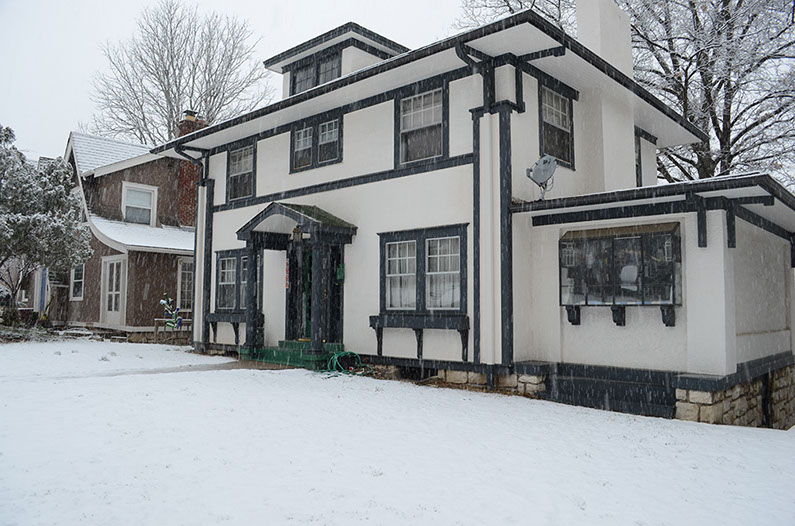
Nikon D7000, 18mm (18-55mm), 1/50, F/7.1, ISO 100
If you want to capture falling snow, you’ll need to pay attention to two things. First, falling snowflakes are invisible if set against a snowy (or otherwise light-colored) background. Note in this photo that you can see the falling snow only where it’s falling past something dark behind it.
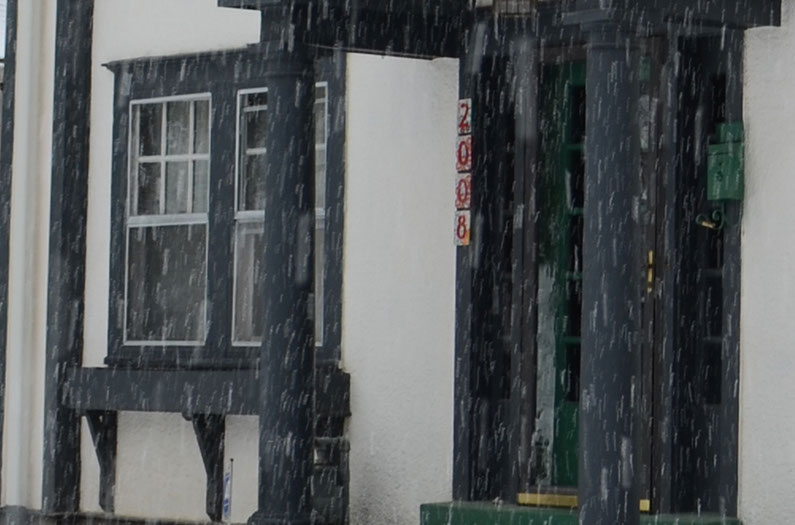
Nikon D7000, 18mm (18-55mm), 1/50, F/7.1, ISO 100, cropped
Second, you need to set your shutter speed so that the shutter is open long enough to capture just the right amount of motion blur. This 1/50 shot is close to perfect. Faster speeds will freeze the flakes in place as tiny spots, which will make your shot look grainy rather than snowy.
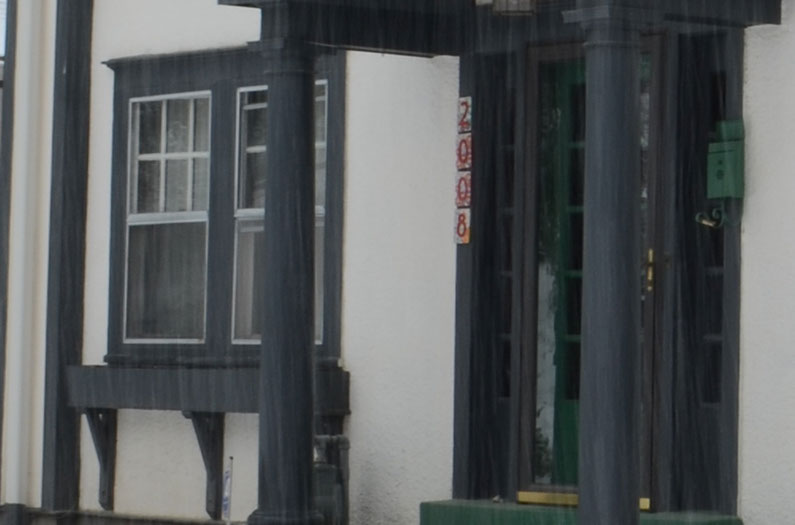
Nikon D7000, 18mm (18-55mm), 1/5, F/22, ISO 100, cropped
In this shot the shutter has been slowed down to 1/5 (thank you, tripod). Snowflakes travel a greater distance in such a comparatively longer time, transforming them into long, indistinct streaks. Though this is an interesting effect, it doesn’t really say “snow.”
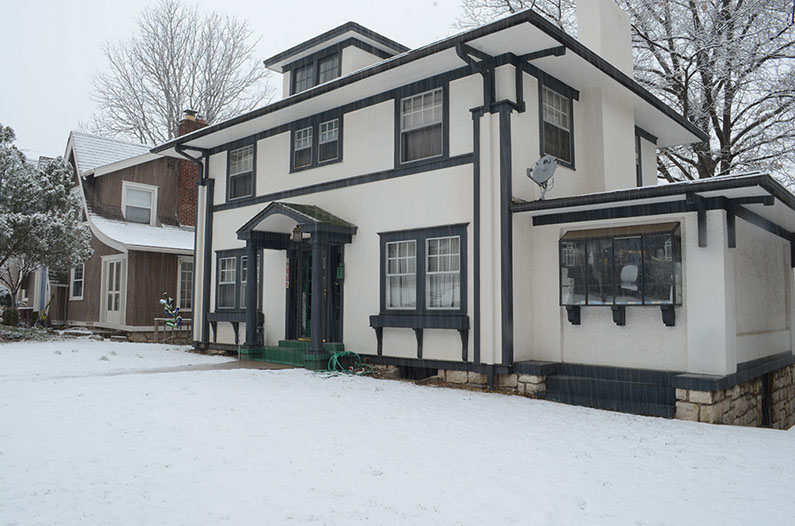
Nikon D7000, 18mm (18-55mm), 1/5, F/22, ISO 100
Indeed, in the un-cropped shot the falling snow disappears almost entirely.
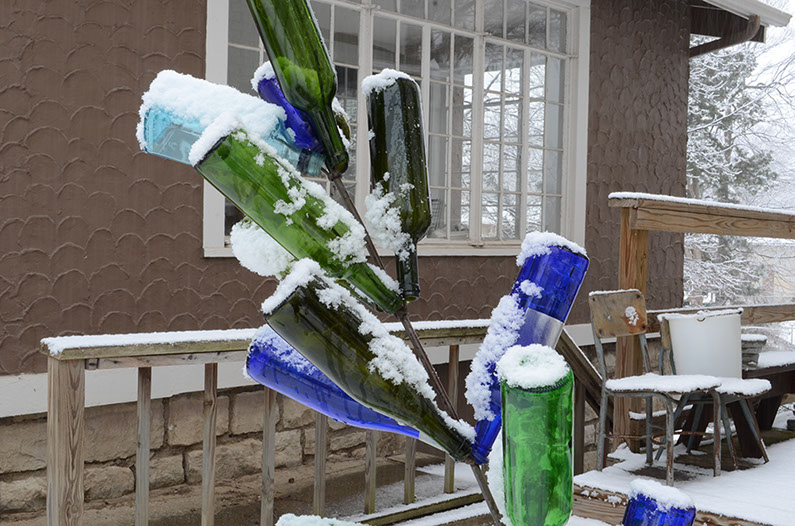
Nikon D7000, 29mm (18-55mm), 1/2, F/22, ISO 100
Now let’s move in closer to the bottle tree on the west side of the house. With less reflected glare off the snow, this scene has less light. In this half second exposure the falling snow is almost completely invisible.

Nikon D7000, 29mm (18-55mm), 1/40, F/4.5, ISO 100
Speed the shutter up – and open up the f-stop to compensate – and now the snoflakes are once again an obvious part of the shot. As an added bonus, the wider aperture narrows the depth of field, throwing the background out of focus and adding visual emphasis to the foreground subject.
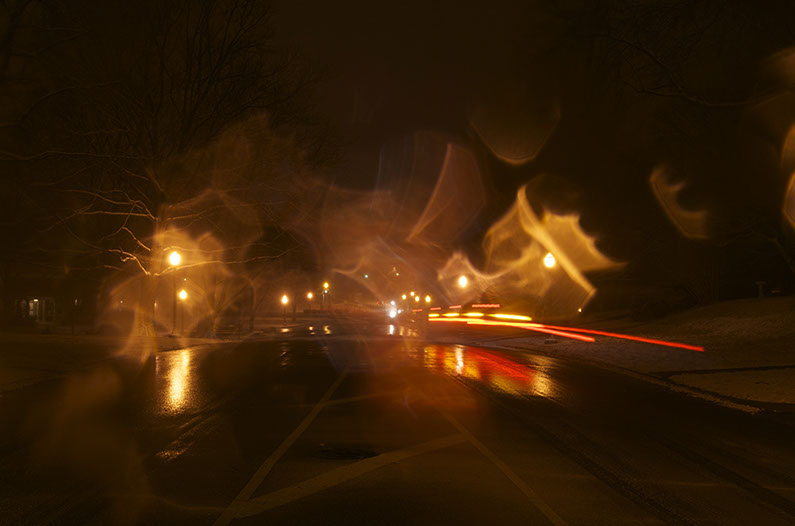
Nikon D7000, 28mm (Tamron 28-200mm), 3 sec., f/8, ISO 100
Here’s a different kind of snow shot: at night during a “wetter” (i.e. closer to the melting point) snow. Normally I wouldn’t want water drops getting on my lens and obscuring the shot, but here it produces an interesting effect. Again note that with a long exposure like this, the falling snow vanishes from the shot.
For more on this photo, check out this blog entry.
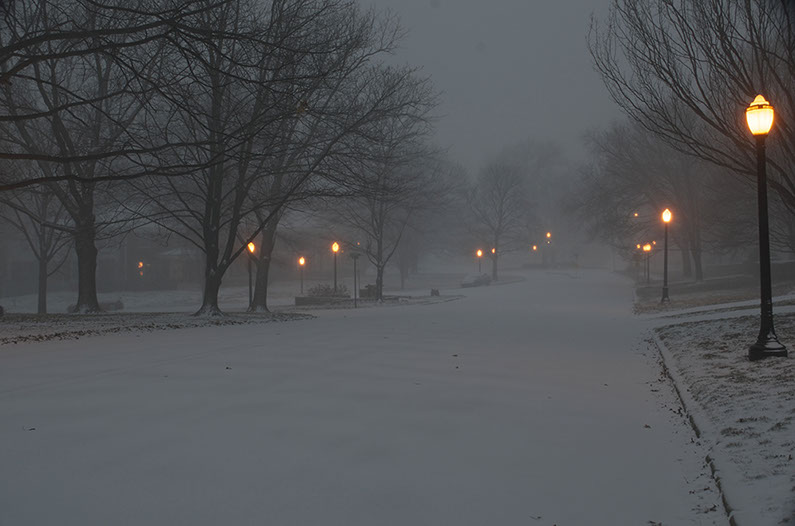
Nikon D7000, 29mm (18-55mm), 1/3 sec., f/10, ISO 100
The blur from melting snowflakes was a fun effect, but it got in the way of being able to see the scene I was trying to capture. So the next time it snowed (Winter Storm Q, the Great Snowpocalypse of 2013) I switched to a lens with a hood.
For more on snow, see the Sketchbook’s pin board about photographing weather.
